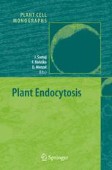Search
Filters applied:
Search Results
-
Introduction: Regulatory processes, an emerging feature in intracellular membrane traffic
The subject of this volume is the molecular mechanism of the intracellular membrane trafficking, a central eukaryotic cell biological process. In the...
-
Vertebrate Limb Regeneration
In this chapter, we have touched upon some of the key processes of vertebrate limb regeneration from the formation of the wound epithelium to pattern...
-
Mammalian Fetal Organ Regeneration
The develo** fetus has the remarkable ability to heal dermal skin wounds by regenerating normal epidermis and dermis with restoration of the...
-
Regenerative Capacity and the Develo** Immune System
Many components of the vertebrate immune system have evolved with dual, interrelated functions of both protecting injured tissues from infection and...
-
Tissue Engineering Strategies for Bone Regeneration
Bone loss due to trauma or disease is an increasingly serious health problem. Current clinical treatments for critical-sized defects are problematic...
-
Stem Cells in CNS and Cardiac Regeneration
The central nervous system (CNS) and the heart muscle regenerate poorly after injury, yet evidence is mounting that both harbor cells capable of...
-
Ferrocene–Peptide Bioconjugates
This chapter sketches an outline of ferrocene–peptide bioconjugates. A variety of ferrocene–peptide bioconjugates have been designed to induce...
-
Catalytic Nickel–Iron–Sulfur Clusters: From Minerals to Enzymes
The geochemical theory of the origin of life proposes that primordial, pre-biotic reactions were carried out in a metal-sulfide-rich environment...
-
Control of Cell Proliferation and Growth by Myc Proteins
Myc proteins act as signal transducers that alter cell proliferation in dependence on signals from the extracellular environment. In normal cells,...
-
Carbene Complexes of Heme Proteins and Iron Porphyrin Models
The possible formation of carbene complexes of cytochromes P450 enzymes in various metabolisms of xenobiotics is first described. In view of these...
-
The Retinoblastoma Gene Family in Cell Cycle Regulation and Suppression of Tumorigenesis
Since its discovery in 1986, as the first tumor suppressor gene, the retinoblastoma gene (Rb) has been extensively studied. Numerous biochemical and...
-
Comparative genomics and gene finding in fungi -- Supplement
Online Supplement to Chapter 1
-
Microwave-Assisted Synthesis of Sulfur and Nitrogen-Containing Heterocycles
This chapter aims to review recent developments in the synthesis of sulfur and nitrogen-containing heteroaromatic compounds under conditions that...
-
Spectroscopic Study of the Structure of Zetekitoxin AB
Zetekitoxin (former name: atelopidtoxin) was reported by Mosher and colleagues in 1969 as a potent, water-soluble, guanidinium toxin found in...
-
Applications of Flexible Molecular Descriptors in the QSPR–QSAR Study of Heterocyclic Drugs
Various formulations of optimal descriptors introduced by different authors during the last 10 years are discussed for the special case of...
-
Manganese(III)-Based Peroxidation of Alkenes to Heterocycles
Synthesis of endoperoxides and hydroperoxides using tris(2,4-pentanedionato)manganese(III) or manganese(III) acetate is described. The reaction of...
-
Microwave-Assisted Synthesis and Functionalization of 2-Pyridones, 2-Quinolones and Other Ring-Fused 2-Pyridones
2-pyridones are important heterocycles with great applicability in medicinal chemistry and this core structure can be found in compounds with...
-
Total Synthesis of Marine Macrolides
Recent progress (2002–2005) of total syntheses of bioactive marine macrolides, lasonolide A, zampanolide, dactylolide, and leucascandrolide A, was...
-
The Chemistry of 2-(1H)-Pyrazinones in Solution and on Solid Support
An overview on the microwave-enhanced synthesis and decoration of the 2(1H)-pyrazinone system is presented. Scaffold decoration using...
-
Rab GTPases in Plant Endocytosis
The Rab family is part of the Ras superfamily of small GTPases. In eukaryotes Rab GTPases are present as members of gene families, and the...
